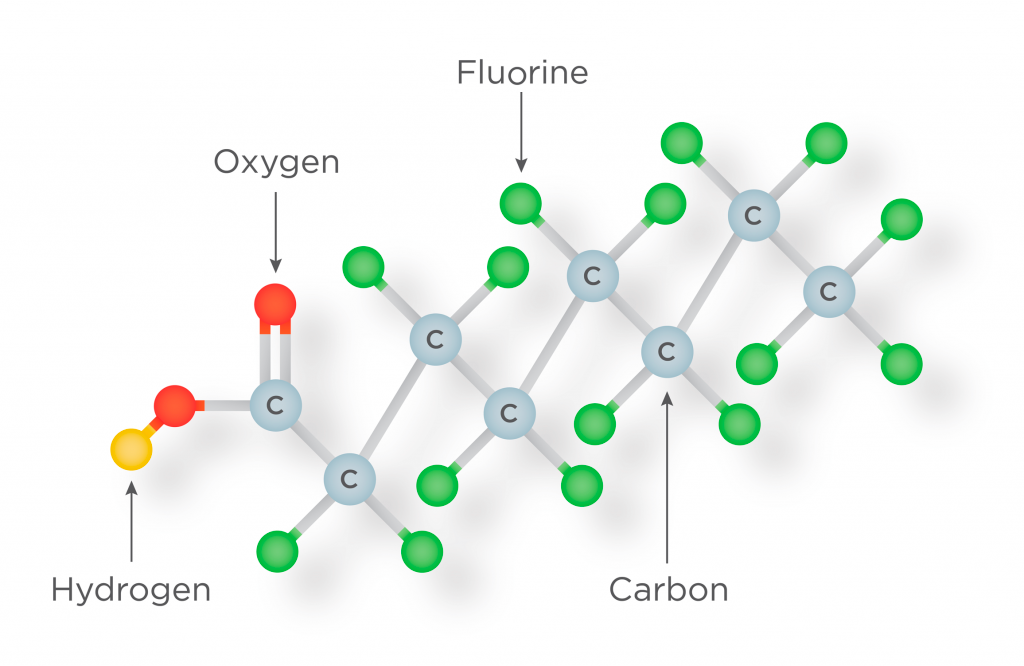Poly-fluoroalkyl substances (PFAS) are useful chemicals that have been found particularly hard to remove from water due to their chemical and physical tenacity. The Haw River carries them to Pittsboro drinking water and Jordan Lake and from the towns upstream. Pittsboro is bringing lawsuits against towns and companies upstream to force them to stop. PFAS have been found to correlate with cancer and possibly influence human endocrine systems.
Finding PFAS requires complex devices at the limits of detection. The EPA had a limit of 70 parts per trillion (that is really tiny), and they have proposed limits for certain PFAS chemicals of 4 parts per trillion. To give you an idea of the size of 4 parts per trillion, if 77,000 residents in Chatham weigh an average of 150 pounds, 4 parts per trillion of that total weight would be (77,000*150*454*4/1,000,000,000,000=) 2% of one resident’s teardrop. As you can imagine, it is tough to measure any concentration that small, and really difficult to remove such tiny amounts.
Pittsboro has installed an activated carbon filter for the city drinking water which does the job, but the filter is expensive and needs frequent replacement. This problem will probably become common in more communities as the chemicals spread and detection improves.
Some good news is that scientists may have found a method to capture these chemicals in electrified metal polymers. Once caught, these can be switched around to dump the PFAS so it can be destroyed, and then the polymers can be reused thousands of times.
Chemists develop sustainable method to remove ‘forever chemicals’ from water (phys.org)



